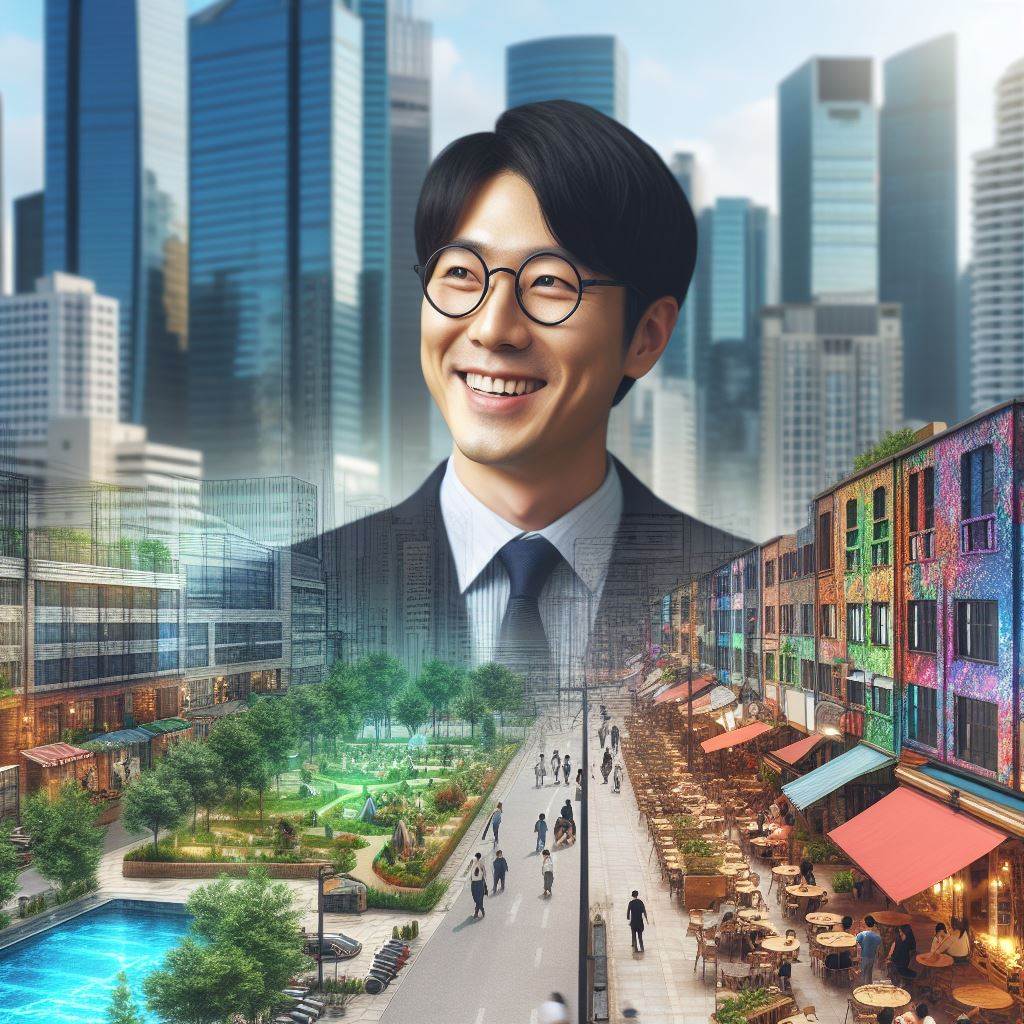Introduction
Small towns, once quiet and quaint, are now grappling with the invasion of colossal shopping malls.
This study delves into the intricate dynamics that unfold when a small town becomes home to a mammoth shopping center.
Importance of Studying Small Towns with Big Malls
Understanding the metamorphosis of small towns due to the advent of colossal malls is imperative.
These retail giants bring not only commercial transformations but also alter the social fabric, influencing lifestyles and community dynamics.
As malls infiltrate these serene landscapes, the essence of small-town living undergoes a profound shift.
The study of such transformations is crucial for urban planners, sociologists, and policymakers.
It provides valuable insights into the challenges and opportunities that arise when traditional communities grapple with modern consumerist culture.
Additionally, exploring these changes contributes to a nuanced understanding of the impact on local businesses, employment, and the overall economic landscape of small towns.
In an era where malls symbolize urbanization and progress, their integration into small-town settings challenges the conventional narrative.
Examining this phenomenon sheds light on the delicate balance between preserving the unique charm of small towns and embracing the conveniences offered by large-scale retail establishments.
As we embark on this exploration, the goal is to unravel the intricate interplay between tradition and modernity, community cohesion, and the economic implications of the coexistence of small towns and big malls.
By understanding this complex relationship, we can pave the way for sustainable development that respects the roots of small-town life while embracing the opportunities presented by the presence of massive retail entities.
Background information on small towns
Definition of a small town
A small town can be defined as a compact community with a relatively low population compared to urban areas.
It is usually characterized by a close-knit community and slower pace of life.
Characteristics of small towns
- Strong sense of community: Small towns often have close-knit communities where people know and support each other.
This creates a sense of belonging and unity among residents. - Quaint and charming atmosphere: Small towns are known for their picturesque landscapes, charming architecture, and quiet streets.
These characteristics contribute to their unique identity and appeal. - Environmental preservation: Many small towns prioritize environmental conservation and sustainability.
They often have green spaces, clean air, and a focus on maintaining their natural beauty. - Limited resources and amenities: Small towns may lack certain amenities and resources that are readily available in larger cities.
This can include limited shopping options, healthcare facilities, and entertainment venues. - Traditional values and cultural heritage: Small towns often hold onto traditional values, customs, and cultural heritage.
This can be seen in local festivals, celebrations, and historical landmarks.
Challenges faced by small towns
- Economic struggles: Small towns may face economic challenges due to limited job opportunities and a lack of industries.
This can result in lower incomes, higher unemployment rates, and limited economic growth. - Brain drain: The younger population in small towns may move to urban areas in search of better educational and career opportunities.
This can result in a declining population and a decrease in talent and skills within the community. - Limited access to services: Small towns can struggle to provide essential services such as healthcare, education, and public transportation.
Residents may have to travel long distances to access these services. - Aging population: Many small towns have an aging population, with young people leaving for urban areas.
This can result in a lack of youthful energy, limited innovation, and a strain on healthcare and social services for the elderly. - Limited infrastructure and development: Small towns often have limited infrastructure, including roads, utilities, and communication networks.
This can pose challenges for attracting businesses and investment.
In essence, small towns have their own distinct charm and character, but they also face unique challenges.
Understanding the definition and characteristics of small towns helps shed light on the environment and way of life in these communities.
By recognizing the challenges faced by small towns, policymakers and community members can work together to find sustainable solutions for their development and growth.
Read: Waterfront Development: Tide of Success
Introduction to Big Malls in Small Towns
Definition of a Big Mall
A big mall is a large shopping complex that offers a wide range of retail stores, entertainment facilities, and dining options.
These malls usually cover a significant area and have multiple levels.
Reasons for Building Big Malls in Small Towns
- Economic Growth: Big malls in small towns serve as catalysts for economic development.
They attract both locals and tourists, stimulating local businesses and increasing tax revenues. - Consumer Convenience: Small towns often lack diverse shopping options.
Big malls provide residents with a variety of choices, eliminating the need for long-distance travel to larger cities. - Job Opportunities: The construction and operation of big malls create numerous employment opportunities for the local community.
This can help reduce unemployment rates and improve the standard of living.
Impact of Big Malls on Local Economy and Employment
- Increased Revenue: Big malls generate substantial revenue through sales and taxes, contributing to the growth of the local economy.
This revenue can be invested in infrastructure, public services, and community development projects. - Job Creation: The presence of big malls in small towns leads to the creation of jobs in various sectors.
These include retail, hospitality, security, maintenance, and management, among others. This offers employment opportunities for both skilled and unskilled workers. - Small Business Growth: While big malls sometimes compete with small local businesses, they can also provide opportunities for growth.
Local vendors and entrepreneurs can set up shops within the mall, benefiting from increased foot traffic and exposure to a larger customer base. - Ancillary Services: Big malls often attract the development of other businesses and services in the vicinity. This includes restaurants, hotels, and transportation services.
Such ancillary businesses indirectly benefit from the presence of the mall, further boosting the local economy. - Tourism Boost: Big malls in small towns can serve as tourist attractions themselves, drawing visitors from nearby areas.
This can lead to increased tourism-related spending, benefiting local hotels, restaurants, and attractions.
In fact, big malls in small towns have a significant impact on the local economy and employment.
These malls provide a diverse range of shopping options, generate revenue, create jobs, and contribute to the growth of ancillary businesses.
Although there are concerns about the potential negative effects on small local businesses, the overall benefits these malls bring to small towns cannot be overlooked.
The presence of big malls can revitalize the local economy, attract tourists, and enhance residents’ quality of life.
Case study: Small town with a big mall
Selection of the town for the study
While conducting this case study, researchers carefully examined various aspects of the chosen small town that housed a big mall.
The selection process for this study was based on finding a town that exemplified the unique combination of having a small-town atmosphere while also featuring a prominent mall.
Overview of the big mall in the town
The big mall in this town stands out as a significant feature, attracting attention and visitors from nearby areas.
Its large retail space provides a wide range of shopping options and entertainment opportunities for both locals and tourists alike.
The mall’s prominent location within the town further adds to its appeal.
Historical background of the town and the mall
To understand the dynamic between the town and the mall, it is crucial to explore the historical background.
The town itself has a rich history that dates back many years.
However, the mall is a more recent addition, significantly altering the town’s landscape and economy.
Understanding the historical development of the mall is important in grasping its impact on the town and its residents.
Description of the mall’s amenities and offerings
Describing the amenities and offerings of the mall is essential to provide a comprehensive view of its operations.
The mall boasts numerous stores, catering to a diverse range of interests and preferences.
In addition to shopping, there are also various entertainment options available within the mall, such as cinemas and arcades.
Furthermore, a wide array of dining establishments can be found, ensuring visitors have an extensive selection of culinary experiences.
Relationship between the mall and the town’s economy
The direct relationship between the mall and the town’s economy cannot be understated.
The presence of the mall has brought numerous benefits and opportunities to the town’s residents.
The mall’s construction created job opportunities, both during its development and ongoing operation, providing livelihoods for local individuals.
Additionally, the mall’s presence has stimulated local businesses, as they support the mall’s operations by supplying goods and services.
In short, the case study focused on a small town with a big mall was chosen based on its unique combination.
The mall’s amenities and offerings cater to diverse consumer preferences, while its impact on the town’s economy cannot be ignored.
This case study sheds light on the intricate relationship between the mall and the town, providing insight into how this dynamic has shaped the community and its development.
Read: Rural Healthcare Real Estate: A Surprising Boom
Economic Impact of the Big Mall
Positive Effects on Local Businesses and Jobs
The construction of a big mall in a small town can have several positive effects on local businesses and job opportunities.
Small businesses within the vicinity of the mall often experience an increase in customer traffic.
This surge in customers can lead to higher sales and profits for these local businesses.
Furthermore, the opening of a big mall can create additional job opportunities for the local community.
Both the mall itself and the various stores within it require employees to operate effectively.
This can result in a decrease in unemployment rates and a more stable economy for the town.
Increased Employment Opportunities
The presence of a big mall brings along increased employment opportunities for the residents of the small town.
The mall typically generates job openings in various sectors such as retail, hospitality, and administration.
These jobs provide an opportunity for the locals to gain employment without having to commute to larger cities.
The creation of new jobs can also address issues like brain drain and improve the quality of life for the town’s residents.
Boost in Tourism and Revenue for the Town
With the establishment of a big mall, there is often a boost in tourism for the small town.
Visitors from nearby areas are attracted to the mall, leading to an increase in footfall and spending.
The influx of tourists can also promote local attractions, restaurants, and other businesses located in the town.
As a result, the town’s revenue and tax income tend to rise, providing financial stability to the local government.
This increased revenue can be reinvested in community development projects and infrastructure improvements.
Differences in Tax Revenues and Financial Benefits
The presence of a big mall may also lead to differences in tax revenues and financial benefits for the town.
The mall itself generates tax revenue for the local government through property taxes, sales taxes, and various fees.
These additional taxes can help fund public services and facilities for the benefit of the community.
However, it is important to consider the potential negative impact on smaller, locally owned businesses.
If the mall draws customers away from these businesses, it may result in a decrease in their revenue and tax contributions.
In general, the economic impact of a big mall in a small town can be significant.
It brings positive effects to local businesses, job opportunities, tourism, and revenue.
However, it is crucial for the town’s government and community to carefully balance the benefits and potential drawbacks to ensure the long-term sustainability and prosperity of the town.
Read: Retail Revamp: A Suburban Success

Socio-cultural impact of the big mall
Changes in local lifestyle and consumer habits
- Introduction of the big mall has brought significant changes in the lifestyle of the locals.
- Increased availability of diverse products and services has led to a shift in consumer habits.
- Previously, locals were limited to shopping at small stores, but now they have more options.
- People have become more brand conscious and are willing to pay a premium for quality products.
- The mall has also introduced new forms of entertainment and leisure activities for the community.
- Residents have started to spend more time at the mall, affecting their social interactions.
- The local lifestyle has become more fast-paced, as people now have access to convenient shopping.
Influence on community activities and events
- The big mall has become a central hub for community gatherings and social events.
- It provides a venue for hosting festivals, concerts, and cultural exhibitions.
- By attracting large crowds, the mall has encouraged the growth of local businesses.
- Community organizations often collaborate with the mall to organize charity events.
- Public spaces within the mall are used for meetings, discussions, and workshops.
- Local artists and performers have gained exposure and recognition through mall-sponsored events.
- However, the mall’s presence has also led to the decline of traditional community spaces.
Advantages and disadvantages of increased commercialization
- The big mall has brought several advantages to the local economy.
- Job opportunities have increased, benefiting both skilled and unskilled workers.
- Small businesses have the opportunity to reach a wider customer base through the mall.
- Increased commercial activity has led to a growth in tax revenue for the community.
- However, increased commercialization has also led to some disadvantages.
- Local small businesses are often overshadowed by big retail chains in the mall.
- The mall’s presence can lead to an over-reliance on consumerism, affecting local culture.
- Traditional markets and independent shops may struggle to survive in the face of competition.
- The mall’s focus on luxury brands may contribute to social stratification within the community.
- Additionally, the influx of visitors to the mall can lead to congestion and increased traffic.
In review, the big mall has had a profound socio-cultural impact on the small town.
It has brought changes in lifestyle and consumer habits, influenced community activities and events, and had both advantages and disadvantages of increased commercialization.
The presence of the mall has transformed the local economy, but also raised concerns about the preservation of local traditions and the sustainability of small businesses.
Read: Luxury Hotel Ventures: Profits & Pitfalls
Local perspectives on the big mall
In order to gain a deeper understanding of the impact of the big mall on the small town, interviews were conducted with local residents, business owners, and officials.
The aim was to gather diverse opinions and experiences regarding the presence of the mall and its effects on the community.
Interviews with local residents, business owners, and officials
A series of interviews with local residents revealed a range of perspectives.
Some praised the big mall for bringing new jobs, increased economic activity, and improved access to a wide variety of products and services.
One resident commented, “I’ve lived in this town my whole life, and the big mall has really revitalized the local economy. It has created so many job opportunities and attracts visitors from neighboring areas.”
Similarly, several business owners expressed gratitude for the increased foot traffic and exposure generated by the mall.
They cited higher sales and improved visibility as benefits of the mall’s presence.
“Having the big mall nearby has been a game-changer for my business. It has increased my customer base and allowed me to expand my operations,” said a local shop owner.
Diversity of opinions and experiences
However, not all opinions were positive. Some local residents and business owners voiced concerns about the detrimental effects of the big mall on small businesses and the town’s unique character.
A resident who preferred to remain anonymous expressed disappointment, saying, “The arrival of the big mall has caused many small businesses to shut down. We’re losing our local charm and becoming just another generic shopping destination.”
Additionally, some officials highlighted the strain on local infrastructure that came with the increase in visitors to the mall.
They argued that the town’s roads, utilities, and public services were struggling to keep up with the demands imposed by the mall.
“While I appreciate the economic benefits of the mall, it has put a tremendous strain on our resources. We’re facing challenges in terms of traffic congestion and providing adequate services,” mentioned one local official.
Overall, it became evident that there was a diversity of opinions and experiences when it came to the big mall’s presence in the small town.
Some saw it as a positive force, bringing economic growth and opportunities, while others expressed concerns about the impact on local businesses and town identity.
It is important for the town’s leaders and residents to come together and find a balance that preserves the unique character of the community while harnessing the advantages that the big mall can offer.
Collaboration between stakeholders is crucial in addressing the challenges posed by the mall’s presence and ensuring a thriving future for the town.
Challenges and criticisms of big malls in small towns
Big malls in small towns have faced substantial challenges and criticisms due to their environmental impacts, impact on local, independent businesses, and displacement of traditional town centers and community spaces.
Concerns regarding environmental impacts
One major concern revolves around the environmental impacts of these vast retail complexes.
Increased traffic congestion and air pollution become prevalent as more shoppers and delivery trucks flood into the town.
The construction of big malls often requires clearing of natural habitats, leading to the loss of biodiversity.
Additionally, the energy consumption of these malls contributes to high carbon emissions and worsens the issue of climate change.
The excessive waste generation from packaging materials and consumer goods further strains local waste management systems.
Impact on local, independent businesses
Moreover, the presence of big malls significantly impacts local, independent businesses.
Small retailers struggle to compete with the wide range of products offered under one roof by big malls.
As a result, local businesses can experience a decline in customers and face financial challenges, often leading to closures.
While big malls may offer employment opportunities, these are often not enough to offset the job losses from the closure of small, community-based businesses.
The overall effect on the local economy is negative, as profits from big mall chains typically flow out of the community to corporate headquarters.
Displacement of traditional town centers and community spaces
In addition to the economic impact, big malls also displace traditional town centers and community spaces.
These malls are typically built on the outskirts of towns, drawing footfall away from the historic downtown areas.
As a consequence, the once lively main streets and local markets lose their charm and vibrancy, resulting in economic decline.
Moreover, community gathering spots, such as parks or squares, are deserted as people spend their leisure time confined within the walls of a mall.
The unique identity and character of small towns are gradually eroded as big malls homogenize shopping experiences across different locations.
In a nutshell, the rise of big malls in small towns presents various challenges and criticisms.
Concerns about environmental impacts, the negative influence on local, independent businesses, and the displacement of traditional town centers and community spaces raise valid points of contention.
It is essential for town planners, policymakers, and communities to consider these challenges carefully before embracing the growth of big malls.
Finding a balance that allows for economic development while preserving the environment, supporting local businesses, and maintaining the unique character of small towns is crucial.
Conclusion
Summary of key points
In this study, we examined the impact of big malls in small towns and found that they have significant economic and social implications.
We discussed how big malls create job opportunities, boost local businesses, and attract tourists, thereby stimulating the local economy.
Moreover, we highlighted the social benefits of big malls, such as providing a gathering place for the community and offering a wide range of entertainment options.
Furthermore, we explored the potential drawbacks of big malls, including increased traffic congestion and the displacement of small, independent businesses.
Overall, our research demonstrates that big malls play a crucial role in the development and growth of small towns, providing both economic and social benefits.
Reflection on the significance of the study
This study sheds light on the importance of big malls in small towns, dispelling any misconceptions about their negative impact.
By examining the positive effects on the local economy and community, we contribute to a better understanding of how big malls can revitalize small towns.
This research also highlights the need for careful planning and management to mitigate potential drawbacks and ensure the sustainable growth of big malls.
Final thoughts on the future of big malls in small towns
As we look ahead, the future of big malls in small towns seems promising, given their proven ability to stimulate economic growth and enhance community life.
However, adapting to changing consumer preferences and incorporating sustainable practices will be crucial for their long-term success.
With proper support, collaboration, and strategic decision-making, big malls have the potential to continue thriving and positively impact small towns for years to come.




